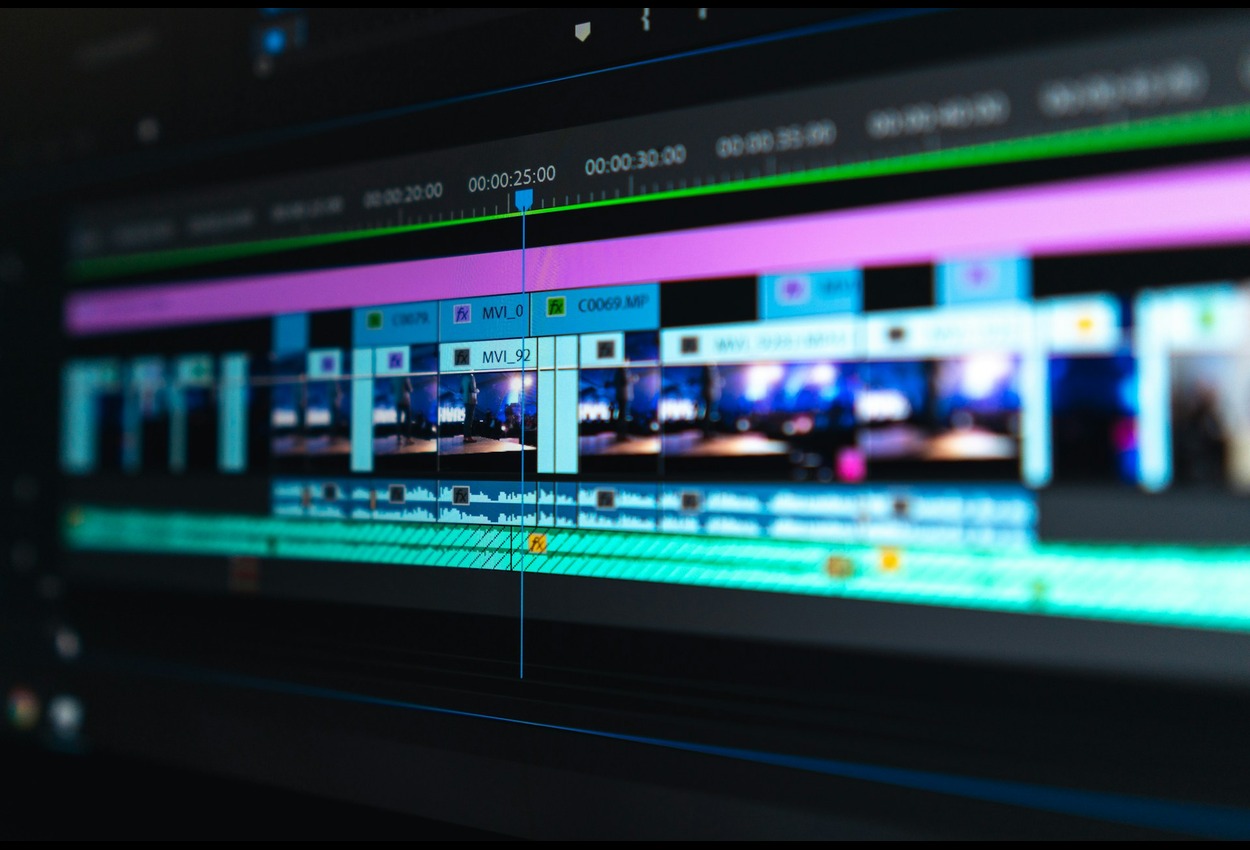Are you ready to take your Source Filmmaker (SFM) projects to the next level? If so, mastering SFM Compile is essential. This powerful tool allows creators to transform their complex designs into a polished, shareable, and audience-friendly final product. Whether you’re creating animations, cinematics, or custom models, understanding how to compile your assets efficiently will significantly improve your workflow. Dive into SFM Compile: your gateway to professional-quality productions!
What is SFM Compile?
SFM Compile refers to the process of preparing and converting assets for Source Filmmaker (SFM). This includes everything from models and textures to animations and maps. It essentially connects the raw files created by artists with the final visual representations of SFM projects.
By properly compiling these assets, creators ensure their work renders smoothly in the software. The compilation process is crucial for maintaining quality and optimizing performance during animation production. Without effective SFM compiling practices, projects can suffer from errors or poor visuals, hindering creative expression.
Purpose of SFM Compiling in Source Filmmaker
SFM compiling in Source Filmmaker transforms raw assets into usable formats for your projects. This process involves converting 3D models, textures, and animations to seamlessly integrate them into your film. This ensures that each element works properly in the SFM environment.
Furthermore, SFM compiling streamlines workflows by allowing artists to efficiently manage complex asset workflows. It facilitates collaboration among team members and helps maintain consistency across projects. With efficient compiling processes, creators can focus more on storytelling than on solving technical problems.
You might also like: EvonyGalore
Key Compiling Features
Key compiling features are essential for bringing your Source Filmmaker projects to life. They simplify the process of transforming raw assets into usable components for animation. Understanding these features is essential for any SFM user.
Model compilation (MDL), texture conversion (VTF and VMT), and animation integration (QC files) form the foundation of this workflow. Each function serves a specific purpose, ensuring optimal aesthetics and performance of models in your scenes, while maps create immersive environments. Mastering these features can significantly boost your creativity.
Model Compilation (MDL)
Model compilation (MDL) is a crucial step in preparing your assets for Source Filmmaker. It transforms your 3D models into a format that SFM can recognize and render efficiently. This involves converting raw model files, typically from Blender or Maya, to MDL files using tools like Crowbar or StudioMDL.
During this process, key properties such as hit zones and collision models are defined. Proper MDL compilation ensures the realism of your characters and objects in the animation environment. Skipping this step can lead to visual issues or unexpected behavior in your final project.
Texture Conversion (VTF and VMT)
Texture conversion is a crucial step in the SFM compilation process. It involves transforming your image files into VTF (Valve Texture Format) and creating the corresponding VMT (Valve Material Type) files. These formats ensure that your textures are optimized for use in Source Filmmaker, delivering detailed images and optimal performance.
Using tools like VTFEdit greatly simplifies this task. You can easily import images, adjust their properties, and export them to the necessary formats. A well-configured texture not only improves visual fidelity but also ensures compatibility between different models and environments in SFM projects.
Integrating Animations (QC Files)
Integrating animations is a crucial step in the SFM compilation process. QC files play a key role in linking animations to models. These scripts define the behavior and interaction of animations in Source Filmmaker, ensuring smooth and natural character movements.
When preparing your QC files, precision is essential. Each entry specifies animation sequences, frame rates, and other essential parameters. A well-structured QC file streamlines your workflow and reduces potential issues during SFM playback. Mastering this aspect can significantly improve the quality and efficiency of your project.
Map Compilation (VBSP, VVIS, VRAD)
Map compilation in Source Filmmaker involves three essential processes: VBSP, VVIS, and VRAD. VBSP generates the geometry needed for your map by converting the design into a binary format readable by SFM. This step lays the groundwork for your scenes and ensures the correct placement of all elements.
After establishing the geometry with VBSP, VVIS optimizes visibility calculations. It determines which areas of your map are visible to players at any given time. VRAD manages lighting by calculating its interaction with the environment. Together, these steps significantly improve the performance and visual quality of your projects.
How SFM Compile Works
SFM compile is a fundamental process that transforms raw assets into usable files for Source Filmmaker. It begins by assembling all the necessary components, including models, textures, and animations. This organized preparation ensures a smooth compilation.
Once the assets are ready, tools like Crowbar or StudioMDL come into play. These applications handle various tasks, such as converting model formats or compiling texture files. This results in the generation of quality control scripts that determine how these elements interact in SFM, facilitating the creation of fluid animations.
Step-by-Step Build Process
The step-by-step build process is crucial to bringing your SFM compile projects to life. Start by organizing your assets into a clear folder structure. This makes it easier to locate files and ensures everything is in place before you begin building.
Next, use tools like Crowbar or StudioMDL to build your models efficiently. Don’t forget texture conversion with VTFEdit, which prepares your images for SFM. Running QA scripts ensures smooth animation integration, allowing you to successfully complete your tests in Source Filmmaker. Each of these steps is critical for flawless results.
Asset Preparation and Folder Structure
Before beginning the SFM build process, it’s crucial to organize your assets. Create a clear folder structure for optimal management. Start with the main directories for models, textures, animations, and maps. This organization will save you time and avoid confusion later.
Next, make sure all the necessary files are ready to use. Place your model files in designated folders, along with associated textures and animation data. Grouping related documents not only simplifies compilation but also helps troubleshoot issues that may arise during rendering in Source Filmmaker.
Using Crowbar or StudioMDL
Crowbar and StudioMDL are essential tools for compiling models in Source Filmmaker. Crowbar offers an intuitive interface that simplifies managing the complexities of model compilation. It supports multiple formats and simplifies converting files to the required MDL format.
StudioMDL, on the other hand, is a command-line tool that offers powerful options for advanced users. While it requires more advanced technical knowledge, its flexibility allows for complex customizations during the compilation process. The choice between these two tools depends on your preferences and the needs of your SFM projects.
VTFEdit for Textures
VTFEdit is a powerful tool for managing textures in your SFM compile projects. It allows you to convert images to the VTF format, which is essential for the rendering process in Source Filmmaker. Its intuitive interface makes it easy to quickly import and export files.
With VTFEdit, you can also create texture variants and manage multiple resolutions effortlessly. This flexibility ensures smooth and dynamic animations. Whether you’re working on character skins or environment maps, mastering VTFEdit will significantly improve the quality of your images.
Running QA Scripts
Running QA scripts is a crucial step in the SFM compile process. These scripts define how models and animations will be processed, ensuring they meet Source Filmmaker requirements. A well-designed QA file determines everything from model properties to bone structure.
To run a QA script, simply access the command line or terminal. Enter the necessary commands to run it using Crowbar or StudioMDL. Watch for errors during this step; resolving them quickly can save time when testing assets in SFM later.
Testing Assets in Source Filmmaker
Once your assets are compiled, it is crucial to test them in Source Filmmaker. Open SFM and load the project to verify that everything displays as expected. Look for missing models or textures that might not have been integrated correctly during compilation.
Navigate the animation timeline helps ensure smooth playback. If you find errors or unexpected behavior, it’s time to review your QA files and resource structure. Adjustments may be necessary before completing the job. Therefore, patience is required to resolve these issues.
Common Compilation Errors and Solutions
Errors are common when using SFM Compile. Missing dependencies is a common issue, which can interrupt the compilation process. Always check that all necessary files are in the correct directories to avoid this problem.
Incorrect syntax in QA scripts can also cause problems. Simple typos or poorly formatted commands can cause compilation failures. Verifying the accuracy of QA scripts and using a text editor with syntax highlighting can help you detect these errors before they become a problem during compilation.
SFM Compile Best Practices
To ensure a smooth SFM compile process, maintain an organized folder structure. Separate source files, compiled resources, and textures to avoid confusion. Proper naming conventions allow you to easily locate the necessary assets. Save your work regularly to avoid losing progress.
Testing assets in Source Filmmaker after each build is crucial. This practice helps identify problems early and avoid more serious complications in the future. Document any errors found and their fixes for future reference. With these best practices, you can optimize your workflow and improve the productivity of your projects.
Automated and Batch Build Workflows
Automated and batch build workflows can significantly improve the efficiency of your Source Filmmaker projects. By streamlining the process, you can build multiple assets simultaneously, saving valuable time and reducing manual errors. This approach is especially beneficial for large projects that require numerous models, textures, and animations.
Using tools like Crowbar or custom scripts allows you to implement a simplified workflow. Simply configure the parameters once and let automation take care of the repetitive tasks. Adopting these advanced techniques will streamline your animation workflow and allow you to focus on the more creative aspects of your project.
Community Tools and Resources in SFM Compile
The Source Filmmaker community thrives on collaboration and knowledge sharing. We have numerous tools and resources to simplify the SFM compile process. Websites like GitHub host a variety of plugins, scripts, and utilities created by developers passionate about optimizing your workflow.
Forums like Facepunch and the Steam Community offer valuable advice from experienced users. You’ll find tutorials, troubleshooting guides, and even custom asset packs to simplify your projects. Connecting with other creators can lead you to discover hidden gems that will enrich your animation experience in ways you may not have imagined.
Why is SFM Compile important in animation workflows?
SFM Compile plays a crucial role in the animation workflow of Source Filmmaker projects. It simplifies the process of converting raw assets into usable formats, ensuring their seamless integration into the SFM environment. By facilitating model compilation, texture conversion, and mapping processing, it improves workflow efficiency.
Additionally, understanding SFM Compile allows creators to solve common issues that arise during asset integration. This knowledge enables animators to produce high-quality content with fewer obstacles.
As more artists explore this powerful toolset, adopting best practices and community resources will optimize their projects. With SFM Compile by your side, you’ll be better prepared to bring your creative visions to life.

